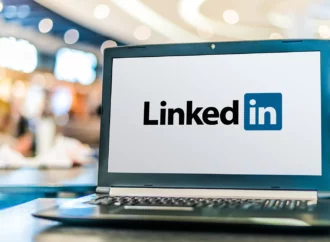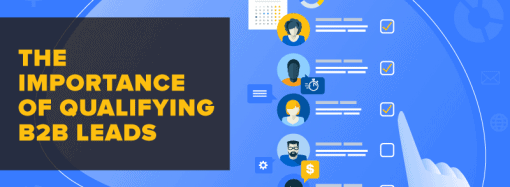Navigating the murky waters of the B2B Marketplace during the COVID-19 pandemic has been anything but smooth sailing, making effective B2B marketing strategies even harder to develop and deploy. Investment and financial services companies, like Goldman Sachs and Forbes, are comparing our current state of affairs to calamities like the 2001 financial crisis and the
Navigating the murky waters of the B2B Marketplace during the COVID-19 pandemic has been anything but smooth sailing, making effective B2B marketing strategies even harder to develop and deploy. Investment and financial services companies, like Goldman Sachs and Forbes, are comparing our current state of affairs to calamities like the 2001 financial crisis and the Great Recession in 2008.
The drop in US advertising spend during the 2008 recession was a major challenge for B2B companies. Many companies that did not survive the recession initiated extreme budget cuts in marketing before folding. Some, like Forbes senior contributor Mayra Rodriguez Valladares, argue that the “COVID-19 economic crisis will be worse than in 2008″. Yet others, like Mark Emond founder and president of Demand Spring, are encouraged by the many talents of today’s marketers, which include: “agility, flexibility, collaboration, and an ability to see the forest and not merely the trees“.
We can all agree that most companies and marketing teams are traversing through uncharted, unprecedented territory. Just like in 2008, budget cuts are inevitable- but:
The B2B marketplace has more resources today than ever before. Though the loss of traditional marketing channels, like business conferences, field marketing and trade shows can seem overwhelming, companies are better prepared both technologically and innovatively than in past financial crises.
We created a guide for 5 effective B2B marketing strategies you can implement to leverage your teams, your budget and ultimately continue to thrive during COVID-19 and further into the Remote Work Era.
 ABM – Account Based Marketing
ABM – Account Based Marketing
As the B2B marketplace has become more and more reliant on digital marketing during COVID-19, we have seen an immediate increase in account-based marketing (ABM). This approach involves focusing resources and personalized campaigns to target customers at an account level. ABM’s popularity is fundamentally due to its effectiveness: 99% of marketers get a greater ROI from their ABM programs than all other types of marketing programs.
Account-Based Marketing’s success is designed in team alignment. It not only aligns sales and marketing teams, but also synchronizes key decision makers around an account-specific theme or goal. Targeting a specific account necessitates personalization on all levels.
Personalization equals focus and focus equals success. Through team alignment in ABM, many businesses see effective marketing and increased ROI in a much shorter time than other B2B marketing strategies.
A key aspect of ABM is creating stories that are not only pertinent, but shareable. The best way: personal and relevant messaging.
- Personal
ABM personal messaging provides marketers and executives with highly targeted potential leads, which leads to a tailored campaign. This personalization concentrates on making broader content focused through targeted titles and images that reflect an account-specific industry.
|
|
A great way to create engaging and personalized content is to highlight your company’s case studies that show how similar businesses have benefitted from your products or solutions. |
- Relevant
The shift to digital reliance during COVID-19 calls B2B companies to embrace the virtual and the various channels for messaging (more on this below). But research shows executives are more concerned with content relevant to their business ideas, than the platform used. These marketers and executives are interested in information that exhibits your knowledge of the account without the feeling of being spammed.
The Remote Work Era creates an image of a business professional sitting at the kitchen table completely focused on his or her work on a single platform. The more time we spend working from home, the more we know this to be false. In a sense, multi-channel interactions and marketing strategies have prepared B2B marketing teams for The Remote Work Era.
Though business professionals may be operating in a singular space physically, consumerism is operating in many places at once. A single start-and-stop campaign, like a lone email or podcast, may not reach your potential client in that one instance as many professionals move through various platforms and channels throughout the day. But multi-channel interactions allow B2B companies to reach potential clients through several outlets including:
- Online: email, blogs, social networks, webinars, podcasts, and more
- Offline: print, TV, and radio, among others.
multi-channel still rules.”
Whereas multi-channel interactions help B2B marketers attract new clientele, full-funnel activities in ABM further engage current accounts, as well as nurture newer clients. Full-funnel activities have been successful during COVID-19 because the strategy:
- Allows B2B companies to support clientele at each level of the funnel, starting with where they are currently
- Creates a community of trust between all parties, and
- Is data-driven and allows further growth through personalization
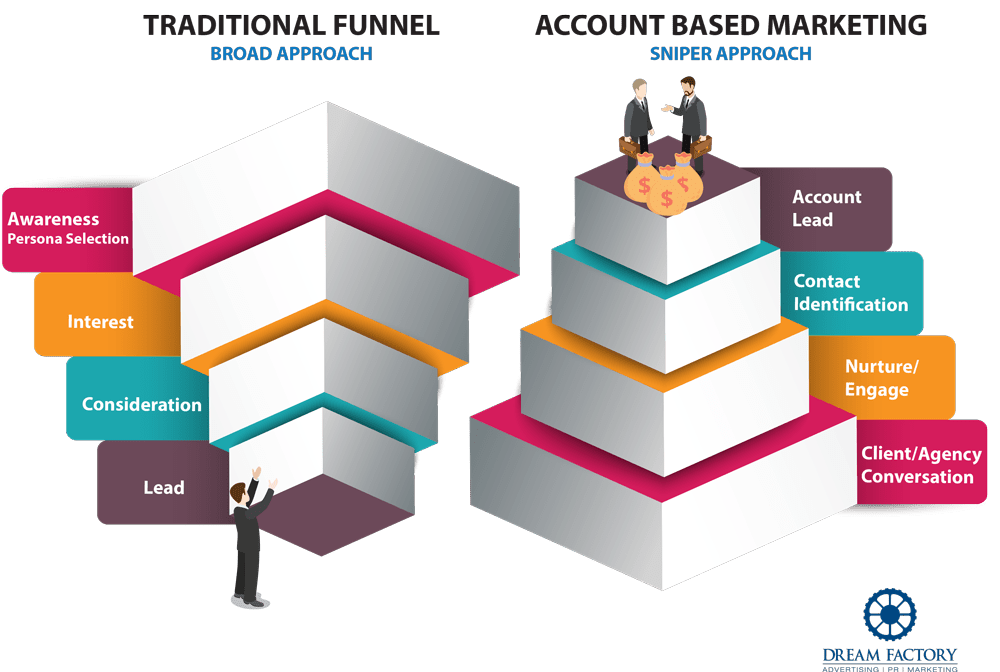
Learn more about our funnel approach and tips for better B2B engagement:
In regards to multi-channel interactions, paid media and PPC have always been popular ways to target accounts online. Pay-Per-Click (PPC) advertising, is a way of reaching out to targeted prospects online.
Google, Bing, Facebook, LinkedIn and many other social platforms allow for specific targeting and retargeting. Because many potential clients are now working from home, the likelihood of clicking a targeted social media ad has increased substantially in the last 3 months.
According to Marketing Chart’s Coronavirus and marketing research, March saw the average click-through rate reach 2.78% (up 0.24 points) then hit 3.10% in April (up 0.63 points).
 Brand and Brand Story Changing
Brand and Brand Story Changing
The brand story marketing strategy allows potential client-businesses to see a company not as a single “product- selling-entity”, but rather as an organization of real people whose collective ideas and desires harmonize with the clientele’s own company. During COVID-19, there has been a significant increase in brand stories and brand story changing, which have seen positive results in the B2B Marketplace surrounding brand awareness.
 Acknowledge Covid-19
Acknowledge Covid-19
By now, most B2B companies have started their crisis response plans. For some, this means switching from real world to virtual, while for others it means budget cuts are rolling out. Many of these crisis plans include a COVID-19 acknowledgement.
 |
Research shows that messages related to COVID-19 from brands and companies are more likely to be opened and 15% less likely to be filtered out as spam. |
But brand awareness and advertising are not the sole purpose for companies to send out COVID-19 acknowledgements. Doing so allows B2B companies to connect with their partners and stakeholders, which will further develop the community of trust.
 Listen to the challenges and anxieties of your customers
Listen to the challenges and anxieties of your customers
As business leaders and professionals in the B2B marketplace, it is always important to anticipate your clients’ needs. However, our state of affairs calls for even more anticipation and care. The unknowns surrounding the COVID-19 pandemic require both flexibility and sensitivity. These are key to your brand story changing. By listening to the challenges and concerns of your customers, you will not only optimize their experiences, but will also solidify positive and long-lasting relationships.
 Converge with the B2C mindset – build community
Converge with the B2C mindset – build community
Ipsos’ survey on Brands and Empathy amid the Coronavirus Pandemic found that 94% of surveyed Americans felt that empathy is what is most important to make society work. And of those surveyed, 81% felt that most brands have shown empathy in response to COVID-19 as seen in the tone and style change of advertisements and communications.
As B2B companies continue to market, it important to converge with the B2C mindset of building a strong and trusting community. The best way to support your costumer-community is to:
1. Reflect on and adapt to your client’s needs
- This could look like reorganizing your content into a digital-friendly platform to offer your clients both accessibility and flexibility
2. Highlight real life stories or case studies that reflect your brand story change to one of care and activism
- Our client, Amco Polymers is a prime example of a changing brand story to reflect the empathy needed today. The resin distribution company regularly posts images of their team and blogs on their resin products to demonstrate their mission of serving society. When a potential business client visits Amco’s blog page, they will be encouraged by Amco’s commitment to provide product for healthcare professionals, while actively protecting their own employees’ health.
 High-Value Long-form content
High-Value Long-form content
Even though we live in a quick, technological world, time and time again, content marketers have found long-form content, or articles over 1,200 words, to be successful. Now more than ever consumers want facts, figures, detailed explanations and more all in one easily accessible place. Long-form content’s benefits include:
 1. Increased user engagement
1. Increased user engagement
The fact that there are more words in the article seems to justify why long-form content pieces have increased engagement, even within the same company’s website or platform. Yet, it’s not so much the length that keeps users reading, but rather what’s happening through the long-form medium. Many readers feel that long-form content offers authenticity as well as rewarding experience. Successful and engaging long-term content pieces typically included:
 2. Positive impact on a page’s rank in SERP’s
2. Positive impact on a page’s rank in SERP’s
Google’s updated algorithms note that users staying on a page for long periods of time indicates valuable information. This results in a positive impact on that page’s rank in SERPs (search engine results pages). This increases the probability of Google showing the page to other searchers. In an era where time is short and content is in demand, many content writers find less frequent but longer pieces to be more worthwhile.
 Marketing Automation
Marketing Automation
Most companies, whether they are B2B or B2C, know the value of marketing automation platforms. Through this revolutionary design, marketing teams can automate common and often demanding tasks like emails and social media advertising. These efforts help to automate marketing and advertising strategies to generate leads, convert leads to sales, and optimize ROI.
 Lead Nurturing: Critical to Survival during COVID-19
Lead Nurturing: Critical to Survival during COVID-19
Many marketing departments assert that lead nurturing has helped their business tremendously during COVID-19. Effective sales practice engages your target audience or potential clients at each stage of the sales funnel. Make sure you are listening to the needs of your customer and providing key information, especially during COVID-19. Lead nurturing is important as it encourages the customer’s decision to convert into long-term paying customers.
According to Marketo, nurtured leads make 47% larger purchases than non-nurtured leads.
 Improve Marketing Outreach with a Marketing Automation Plan and Strategy
Improve Marketing Outreach with a Marketing Automation Plan and Strategy
A single business professional can engage an average of 20 leads with authentic conversations. A team could handle 50. But to continually maintain and grow your sales funnel, a company would need more than 50 leads. A marketing automation plan will help improve marketing outreach by keeping your target audience engaged on the path of conversion.
On this path are automated “triggers” to guide your customer. Those triggers are simple reminders such as:
1. Retargeting advertisements after reading a blog post or listening to a podcast.
2. Targeted email check-in that encourages potential clients to sign-up for your company’s next virtual summit.
In a time that requires empathy and sensitivity, along with personalized marketing, automation can actually help foster trusting business relationships. Of course, this requires reflecting on your customer’s needs to make them feel supported throughout the conversion.
 Embrace Virtual
Embrace Virtual
B2B companies have always thrived in the digital realm when acquiring and nurturing leads. But like B2C businesses, B2Bs have also relied on human interaction for maintaining positive client relationships. COVID-19 has paused traditional marketing channels, like trade shows and in-person meetings, so now is the time for the B2B marketplace to embrace the virtual.
Many B2B crisis response plans include increased digital advertising, adapting old content to new digital platforms, and enhanced digital media, like podcasts and webinars. In this section we will explain the advantages of virtual events and direct mail.
 Virtual Events
Virtual Events
As in-person events have come to a halt for the unforeseen future, many businesses have been contemplating hosting virtual events. Virtual events are really any organized experience being held online rather than in person. Some popular virtual events are:
-
Ask me Anything
Often on social media platforms like Instagram or Facebook Live, business leaders hold open forums where viewers can literally ask anything. AMA events helps create a sense of community as well as provide potential customers with key information.
-
Virtual Coffee Meetups
Virtual coffee events run similar to AMAs, but are less public. There is typically an agenda of topics, but in a less formal setting.
-
Live Demonstrations
Live demos and in the field marketing have always been trendy with B2C business, but during The Remote Work Era, B2B companies are stepping up their game by bringing customers into their brand story virtually.
-
Virtual Summits
Virtual summits are powerful online marketing tools, which typically consist of key speakers interviewed about a specific topic. Some virtual summits include breakout sessions, case studies, and a gallery hall. Virtual summits are the perfect way to help potential clients eliminate that cabin-fever feeling.
 Virtual Event Benefits
Virtual Event Benefits
-
Lower Cost
Virtual events have exceedingly less overhead cost than traditional events: no venue or travel expenses. Keep in mind, these events are “free” and virtual event budgets should focus on telemarketing campaigns or “distributing relevant, personalized swag in dimensional direct mail to qualified leads after the event”.
-
Expanded Reach
Because virtual events are easier to attend, B2B companies have seen an increased reach of potential leads and customers.
-
Measurement Benefits
Virtual events also help B2B businesses gain quantifiable insight. Companies can develop an engagement to learn more about which content attendees seem to care more about.
-
Momentum Building
Virtual events allow attendees and users to create an ongoing forum about specific topics and areas of interests – keep the momentum going. As B2B companies embrace the virtual, posting sessions online allows attendees to re-watch and share information with other colleagues and potential clients.
-
Repurposing
The digital channel needed for a virtual event actually provides an easy format for repurposing content. B2B companies can repurpose content and alter accordingly with the goal of reaching a broader or even new target audience.
 Direct Mail
Direct Mail
Direct mail is a great channel for distributing personalized items for strong leads after your virtual event, but that is not it’s only advantage. Direct mail is also a great way for companies to show their brand story changing to acknowledge COVID-19. Researchers find that mail pertaining to COVID-19 is more likely to be read than direct mail before the pandemic. Set up your direct mail with a strategic and empathetic plan.
For example, if your company provides a service or product that can help clients during the COVID-19, highlight it! Companies can also use direct mail to encourage customers and potential clients to visit their updated digital platforms.
Marketing needs to be smarter
COVID-19 is only the beginning of changes in the way business leaders, especially in B2B companies, market. Our current state of affairs has encouraged B2B companies to look for new and innovative ways to market in an unusual marketplace.
That being said, marketing today needs to be smarter. Through ABM, businesses can align and personalize marketing for targeted accounts, while providing a sense of empathy. B2B brand stories can highlight that empathy and continue to build lasting bonds with new and current customers. High-Value Long-form content allows B2B companies to provide the information desired by clientele through an immersive and rewarding channel. Marketing Automation offers companies a way to communicate with leads efficiently, while continuing authentic conversations with qualified leads. All of these strategies can be implemented through a virtual platform, as traditional channels have been halted for now. Embracing virtual has opened the marketplace in new and exciting ways.
It’s important for B2B marketing to morph and work smarter to respond to the new demand.
How has your B2B company’s marketing strategy changed due to COVID- 19? If you’re looking to quickly pivot to effective B2B marketing strategies, contact us today!

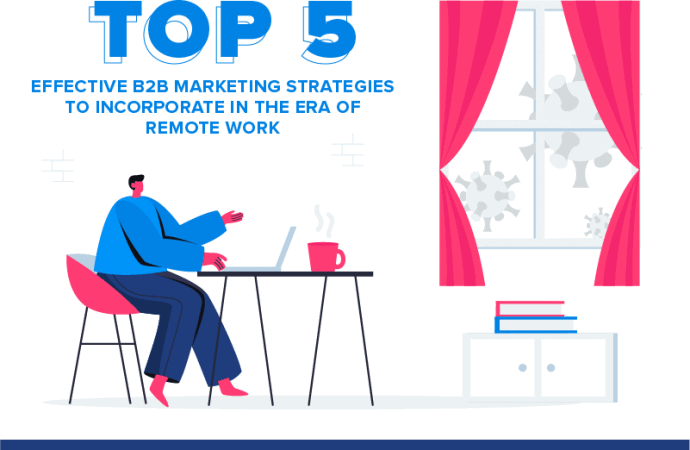








 Acknowledge Covid-19
Acknowledge Covid-19 Listen to the challenges and anxieties of your customers
Listen to the challenges and anxieties of your customers Converge with the B2C mindset – build community
Converge with the B2C mindset – build community 1. Increased user engagement
1. Increased user engagement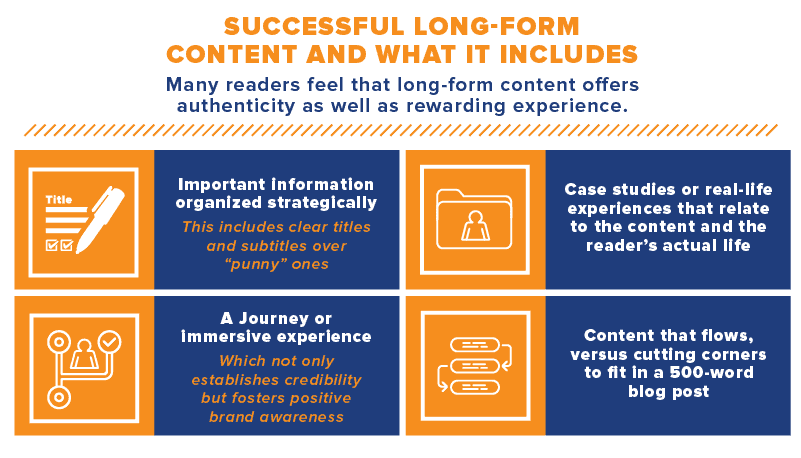
 2. Positive impact on a page’s rank in SERP’s
2. Positive impact on a page’s rank in SERP’s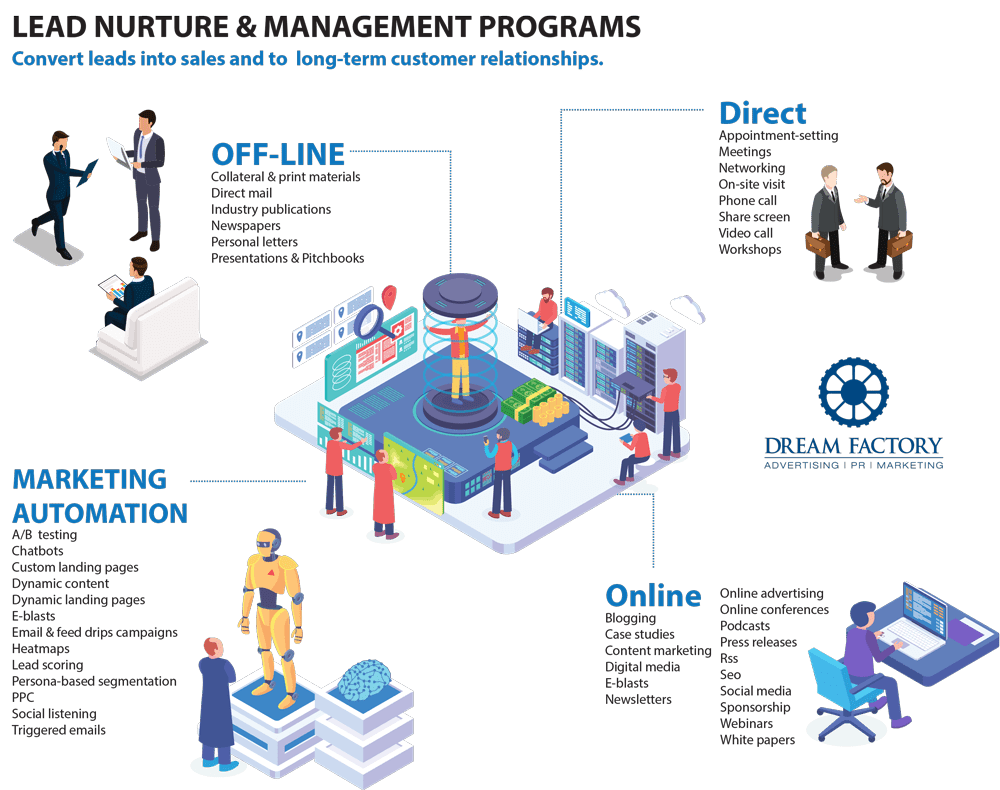
 Lead Nurturing: Critical to Survival during COVID-19
Lead Nurturing: Critical to Survival during COVID-19 Improve Marketing Outreach with a Marketing Automation Plan and Strategy
Improve Marketing Outreach with a Marketing Automation Plan and Strategy Virtual Events
Virtual Events Direct Mail
Direct Mail